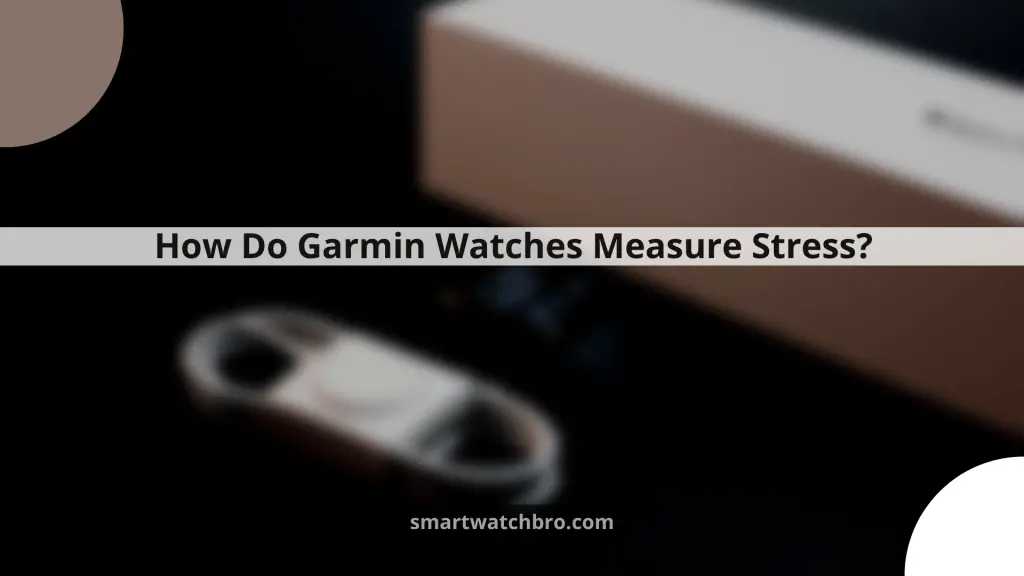How does Garmin measure stress? Garmin’s level of stress is a reflection of your overall activity. You could do lots of activities but not get stressed out. Or you could not be active much and still stress out.
However, Garmin, a creator of GPS fitness devices and accessories, helps you manage the stress in your life. Stress can be bad for you, and your heart rate is a great indicator.
Stress levels are measured differently by different people. Garmin has its own way of doing it. The company is developing a wearable device to measure stress levels by sensing your heart rate variability. Learn more about how Garmin measures stress.

Is Garmin’s stress score authentic?
Today’s fitness trackers may be in for a big surprise — our bodies don’t necessarily respond to stress the same way all the time. Your exercise routine, activity level, sleep habits, diet, and other factors can influence stress levels.
The watch’s heart rate monitor calculates Garmin’s stress score. Using Garmin’s stress score to monitor stress levels is as effective as measuring your heart rate. The accuracy of your stress score increases with wear, so you can obtain optimal results even when you’re sleeping.
Ideally, a heart rate monitor should fit snugly just above the wrist bone, not too tight or loose. A tight watch will disrupt the signals sent by sensors and lead to inaccurate readings. A loose watch can also cause false readings due to signal shifts.
Garmin’s heart rate monitor is not diagnostic, so its accuracy will be better than dedicated heart rate variability devices. It indicates the stress level by identifying the activities throughout the day. The Garmin stress score is an approximation of your stress rating.
What Do the Stress Level Numbers Mean in Garmin watch?
To help you better understand your stress level, Garmin has implemented stress zone numbers in their watches. The stress levels feature uses a unique algorithm to calculate your heart rate variability, which indicates your stress level.
Garmin has developed a simple way to rate your perceived stress on a scale of 1–100. Every day, Garmin calculates your general level of stress and categorizes it into four levels (rest, low, medium, and high). Watches provide stress levels based on the following scale and categories:
- 0–25: Quite relaxed or resting state
- 26–50: Conditions of low stress
- 51–75: Moderately stressful
- 76–100: High levels of stress
A stress level will not record if you are too active (such as during strenuous exercise).
Stress measurement on a Garmin watch
During inactivity, Garmin measures HRV despite active users’ variability. The Garmin Elevate wristwatch analyzes a person’s heart rate variability to detect stress. It measures the intervals between your subsequent heartbeats.
During stress, the beats are shortened, while at rest, they are longer. Stress ratios are calculated by comparing your resting value to your current value.
Since it is not a stress-detecting tool, it is just an excellent feature Garmin provides that may or may not be accurate.
In case of consistent stress levels, it is recommended that you seek a doctor’s guidance to control the stress level.
How does Garmin Venu measure stress?
Even though smartwatches are not everyone’s cup of tea, the Venu is quite a versatile multi-sport tracker in its own right. Aside from tracking blood oxygen levels and heart rates, the system also can identify stress based on the collected heart rate data.
Garmin’s popular heart rate monitor measures three metrics — stress, heart rate, and recovery time — to gauge physical stress. The VENU wrist unit measures how long a person spends in different heart rate zones. These zones correlate directly to stress levels.
A person’s heart rate variability (HRV) is considered a reliable indicator of stress on the body, and Garmin can measure your heart rate variability (HRV) to inform you that you need to ease off or change your pace if you’re stressed out.
How to determine your stress level by analyzing your heart rate variability on a Garmin Venu watch?
Exercise, practice, relaxation, nourishing your body, and managing your stress levels all influence your overall stress level. To determine your stress level, you must consider these percentages to analyze your heart rate variability.
An indicator of stress level can be found on Garmin Watch from 0 to 100. Whenever you are at rest, you are between 0 and 25; when you are at low stress, you are between 26 and 50; then you are at medium stress from 51 to 75; and when you are at high stress, you are between 76 and 100.
By indicating your stress level percentage, the Garmin Venu watch can determine your tension levels. You can monitor the details of your stress levels over time as you sync your device with Garmin ConnectTM. Wear it regularly to achieve the best daily results, even while sleeping.
Persistent stress can be detrimental to one’s health, but detecting it can be challenging. Stress measurement is typically based on a person’s subjective view of their situation. But a new device allows stressed-out people to take their stress levels into their own hands.
Still, How Does Garmin Measure Stress? Garmin can measure your stress levels and help you manage them by tracking and communicating your stress level.

